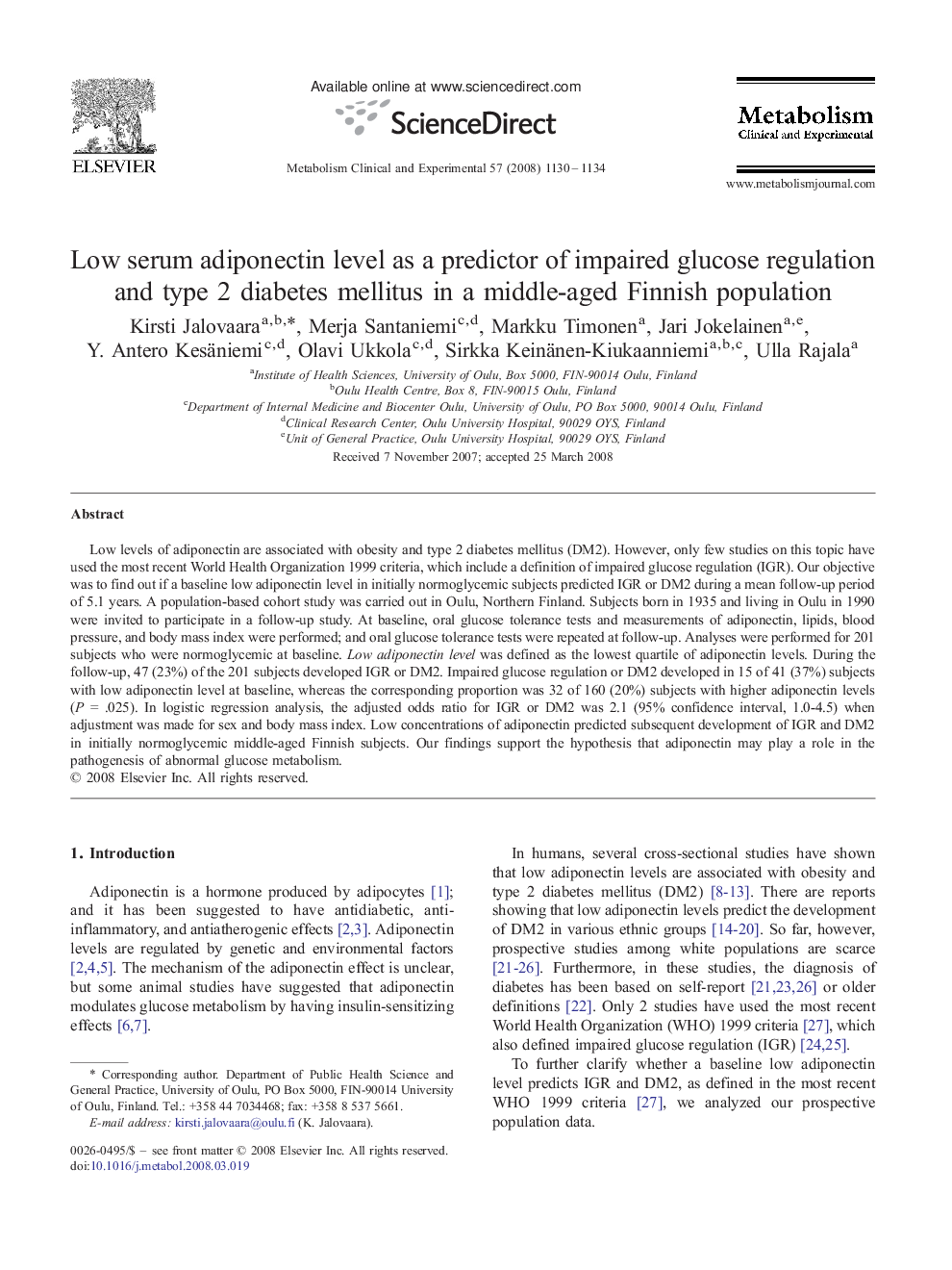| Article ID | Journal | Published Year | Pages | File Type |
|---|---|---|---|---|
| 2806955 | Metabolism | 2008 | 5 Pages |
Low levels of adiponectin are associated with obesity and type 2 diabetes mellitus (DM2). However, only few studies on this topic have used the most recent World Health Organization 1999 criteria, which include a definition of impaired glucose regulation (IGR). Our objective was to find out if a baseline low adiponectin level in initially normoglycemic subjects predicted IGR or DM2 during a mean follow-up period of 5.1 years. A population-based cohort study was carried out in Oulu, Northern Finland. Subjects born in 1935 and living in Oulu in 1990 were invited to participate in a follow-up study. At baseline, oral glucose tolerance tests and measurements of adiponectin, lipids, blood pressure, and body mass index were performed; and oral glucose tolerance tests were repeated at follow-up. Analyses were performed for 201 subjects who were normoglycemic at baseline. Low adiponectin level was defined as the lowest quartile of adiponectin levels. During the follow-up, 47 (23%) of the 201 subjects developed IGR or DM2. Impaired glucose regulation or DM2 developed in 15 of 41 (37%) subjects with low adiponectin level at baseline, whereas the corresponding proportion was 32 of 160 (20%) subjects with higher adiponectin levels (P = .025). In logistic regression analysis, the adjusted odds ratio for IGR or DM2 was 2.1 (95% confidence interval, 1.0-4.5) when adjustment was made for sex and body mass index. Low concentrations of adiponectin predicted subsequent development of IGR and DM2 in initially normoglycemic middle-aged Finnish subjects. Our findings support the hypothesis that adiponectin may play a role in the pathogenesis of abnormal glucose metabolism.
